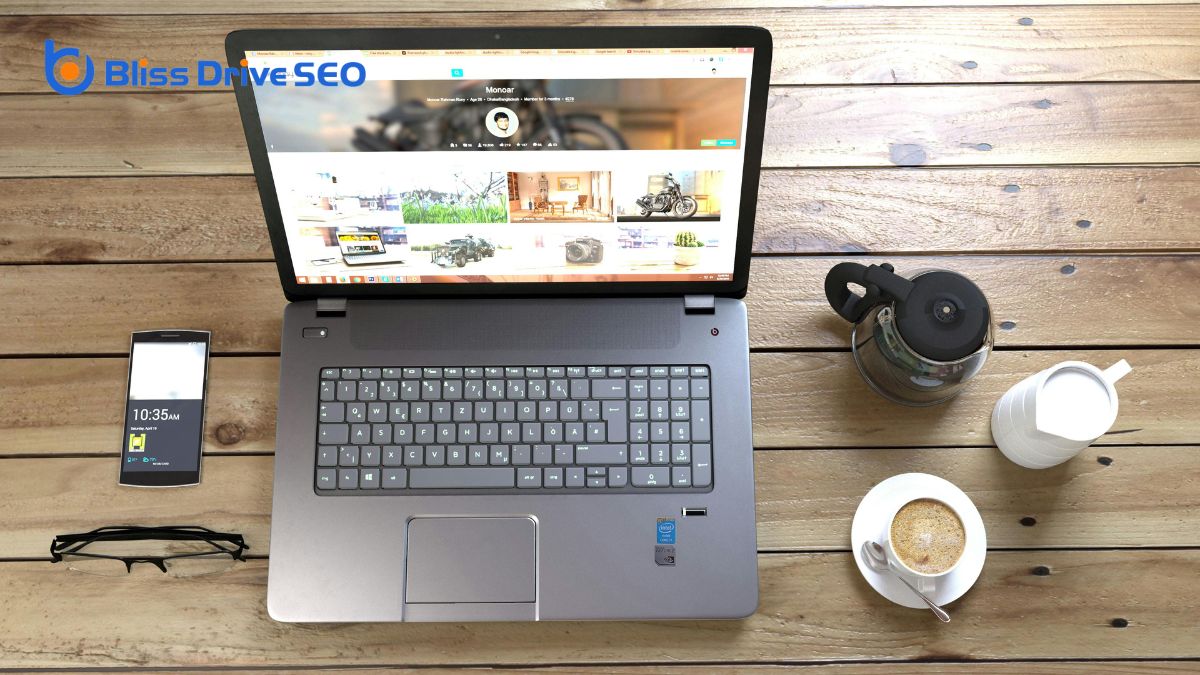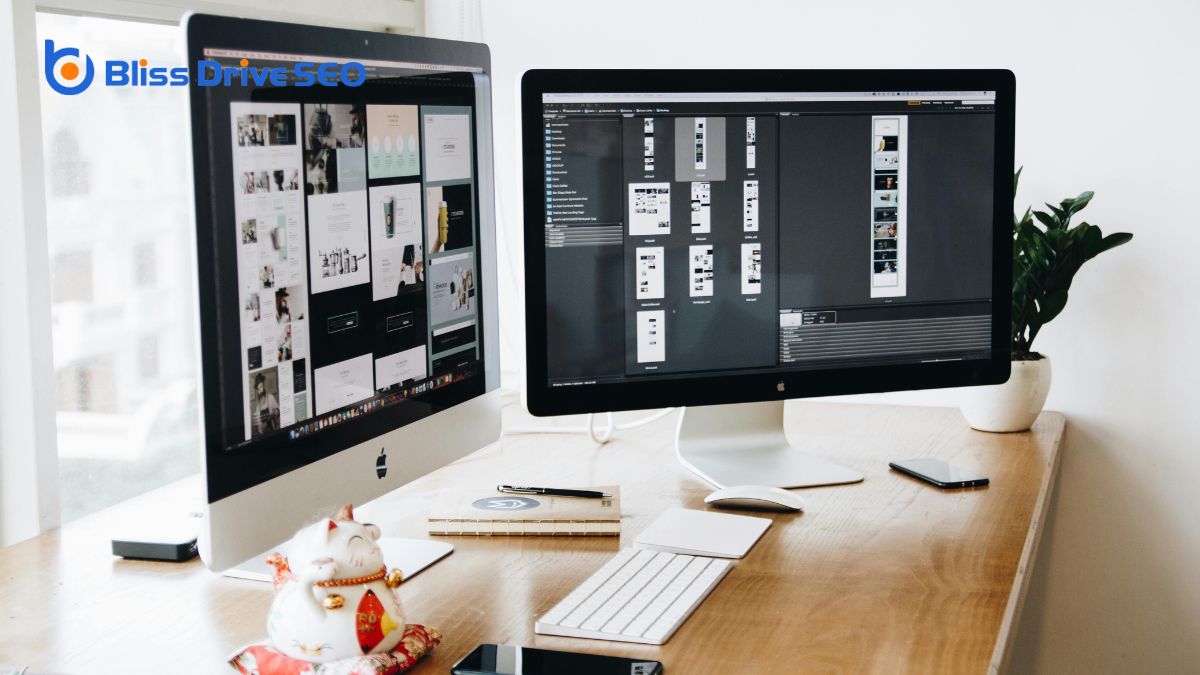Digital Marketing Services
Learn More About Us

Starting your journey in UX design can be overwhelming, but focusing on a few key areas can make a big difference. First, mastering the basics is essential; understanding the distinction between UI and UX and grasping core principles will set a strong foundation. Next, you'll want to develop essential skills like research and design thinking, which are vital for creating user-friendly experiences. Building a robust portfolio with real-world projects and networking with peers and mentors are also important steps. And don't forget to stay updated on industry trends. Curious about how to achieve all this effectively? Let's break it down further.
Grasping the fundamentals of UX design is vital for laying a strong foundation in your design career. Understanding the difference between UI and UX is essential. While UI design focuses on the visual layout, UX design delves into the overall user experience. It's about how users interact with your design, whether on a mobile device or a desktop.
To create an outstanding user experience, start with user-centered design principles. This means keeping the user's needs and satisfaction at the forefront of your design process. Conducting usability testingEvaluating a website's ease of use by testing it with real users and gathering their feedback. can help you identify pain points and improve the overall experience.
Additionally, don't overlook information architecture—organizing content so users can find what they need quickly enhances usability.
Familiarize yourself with essential UX tools like Sketch, Figma, and InVision. These tools are invaluable for wireframing and prototyping, allowing you to visualize and test your ideas before full-scale development.
When designing, pay close attention to text size and layout to guarantee readability and accessibility, especially on mobile devices.
Creating user personas and conducting user research will guide your design decisions, helping you tailor experiences that resonate with your audience. Stay updated on industry trends and best practices through UX blogs, books, and online courses to keep your skills sharp.

Developing vital skills in UX design isn't just about mastering tools; it's about adopting a mindset that combines creativity with empathy. You need to be proficient in design software like Sketch and Figma. These tools help you create wireframes and prototypes efficiently, which are foundational to any user interface.
Understanding user behaviors and needs is pivotal. Practice user research techniques using tools like UserTesting and Hotjar. These tools provide insights into how real users interact with your designs, ensuring a better user experience.
Familiarize yourself with design thinking principles. This approach allows you to tackle problems creatively and empathetically, which are fundamental traits for any UX designer. Applying key UX design methods such as user personas, user flows, and usability testing helps you develop effective design solutions.
Don't overlook the importance of text and font size. Text that's too small can be harder to read, especially on mobile devices. Always consider how your design will appear on different screens. Use visual cues to highlight important information, ensuring users can navigate your interface effortlessly.
Lastly, stay updated on industry trends and best practices. Follow UX design blogs and podcastsAudio content distributed through digital channels, often in series format., and take online courses to keep your skills sharp and relevant.
Creating a standout portfolio is vital for showcasing your UX design skills to potential employers. Your portfolio should include a variety of projects to demonstrate your range of skills and expertise. Clearly label each project with a brief description of the problem you solved and your design process. This helps employers understand not just what you did but how you did it.
Highlighting any real-world projects or internships is essential. These experiences show that you can apply your skills in practical settings and have worked on projects with tangible outcomes. Make sure your portfolio is visually appealing and easy to navigate. A clean, well-organized layout lets employers focus on your work without distractions.
Don't forget to regularly update your portfolio with new projects and skills. The UX design field is always evolving, and staying current is key. Showcasing your latest work ensures that your portfolio reflects your current abilities and keeps you competitive in the job market.
After building a compelling portfolio, your next step is to network effectively within the UX design community. Networking is vital for expanding your opportunities and learning from others in the field. Here are some actionable tips to get you started:

Keeping yourself informed about the latest trends and best practices in UX design is vital for staying competitive in the field. Following popular UX design blogs like Nielsen Norman Group and Smashing Magazine can provide you with valuable insights and tips. These resources are a great guide to UX and can help you learn UX principles that are important for creating effective mobile apps and visually distinct interfaces.
Engaging with the UX design community is equally significant. Platforms like UX Design CC and Designer Hangout offer you a chance to stay updated on industry news and discuss experience design with fellow professionals. Attending virtual UX design conferences and webinars is another excellent way to learn from industry experts and stay up-to-date with best practices.
Subscribing to design newsletters such as UX Design Weekly and Sidebar guarantees you get curated content and resources delivered straight to your inbox. Additionally, leveraging social media platforms like LinkedInA professional networking site used for career and business networking. and TwitterA microblogging and social networking service where users post and interact with messages known as "... allows you to follow UX design influencersIndividuals with the power to affect the purchasing decisions of others due to their authority, know... and companies for real-time updates and discussions. These combined strategies will help you stay informed and continually enhance your skills to help users have the best possible experience.
As a beginner in UX design, nail the basics, sharpen your essential skills, and focus on creating a standout portfolio. Don't forget to network with peers and mentors, and always stay updated on the latest industry trends. By doing this, you'll set a solid foundation for a successful career in UX design. Remember, the key to excelling is continuous learning and adapting. You've got this!
